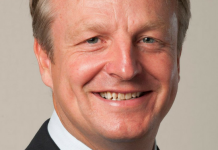Then there are those areas of strength you have as a company. At BP we’ve blazed a trail in technologies like seismic imaging and enhanced oil recovery. We’ve specialised for a long time in the management of giant fields. And we’ve built up strong relationships that have stood the test of time. We get to celebrate a lot of milestones. When the first airplanes were flying between from the UK and India, BP established a refuelling depot in Sharjah. So our relationship with the United Arab Emirates goes back to the early 1930s.
That brings me to a third question, which is “What does the new world of energy mean for the UAE and the Middle East more widely?
As we’ve just seen, about half of all the world’s oil reserves are here in this region – and over 40 per cent of the world’s natural gas. These are among the world’s lowest cost barrels in some of the world’s biggest fields – fields like Rumaila in Iraq, Burgan in Kuwait – and Zakum and Umm Shaif here in Abu Dhabi. These are all mature fields but they are also fields with a long and productive life ahead.
The days of easy oil may be over, but technology and expertise are redefining production all the time. In Rumaila five years ago, production was running at under a million barrels a day. Since then we have drilled 200 new wells and raised production to over 1.3 million barrels a day, and we expect that to rise. That’s been achieved by a strong focus on reservoir management and excellence in drilling in a three-way partnership with the South Oil Company, PetroChina and ourselves in BP.
In Oman not so long ago it didn’t look like it would be economic to produce from the tight sandstone of the Khazzan field. We’re in the process of bringing in what we’ve learned in the US about hydraulic fracturing, and that is going to unlock a billion cubic feet of gas a day when production plateaus after first gas in late 2017.
Here in Abu Dhabi we’re working with our colleagues in ADMA-OPCO in a number of different ways. One of which is to develop a bespoke version of our LoSal Enhanced Oil Recovery technology. The ADMA-OPCO ambition is to take recovery rates up to 70 per cent in the carbonate reservoirs offshore. That’s a great example of adapting to the new energy world.
The old convention was that about two-thirds of the oil in a reservoir would go unproduced – too difficult or uneconomic to unlock. The new convention is that we can aspire to produce as much as two-thirds. When you think about what that means it’s extraordinary. Every 1 per cent increase in recovery here in the Middle East equates to between 16 and 20 billion barrels. Or to put that another way – it’s like discovering a whole new set of supergiant fields.
Part of the new reality is that mature giant fields will continue to be productive for much longer, supported by advances in digital imaging, big data analytics and potentially new breakthroughs in bio and nano technologies. To sum up then, we are in a new world with new economic realities. It’s a world of growing demand with oil and gas in plentiful supply, but also with growing concerns about carbon. The immediate response to that is to find a new point of balance – one that is resilient to the challenges of the new environment, and also flexible to the rise to the opportunities. Here in the Middle East natural resources have helped to transform people’s lives over the past half-century and more.
That transformation will continue right through this century as we forge new partnerships between IOCs and NOC – and find new points of balance in the face of lower prices and tougher recovery challenges. These are partnerships that share world-class technical expertise and world-class local capabilities and resources. They are also partnerships of complementary strengths that work to the benefit of both companies and countries. And no region is better placed than the Middle East to take advantage of the potential in greater collaboration.





